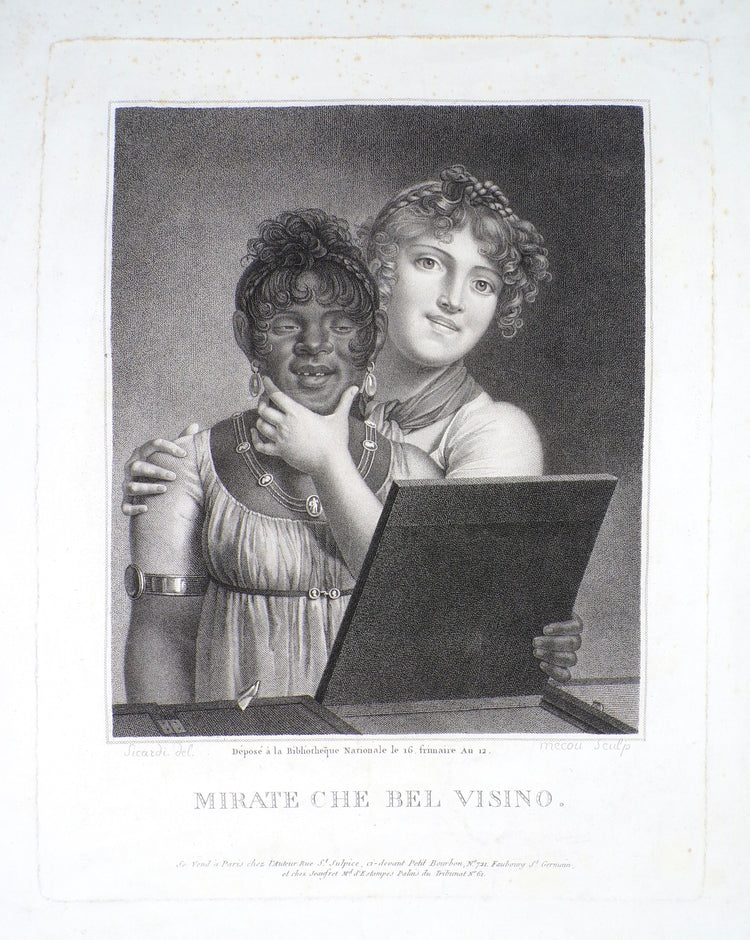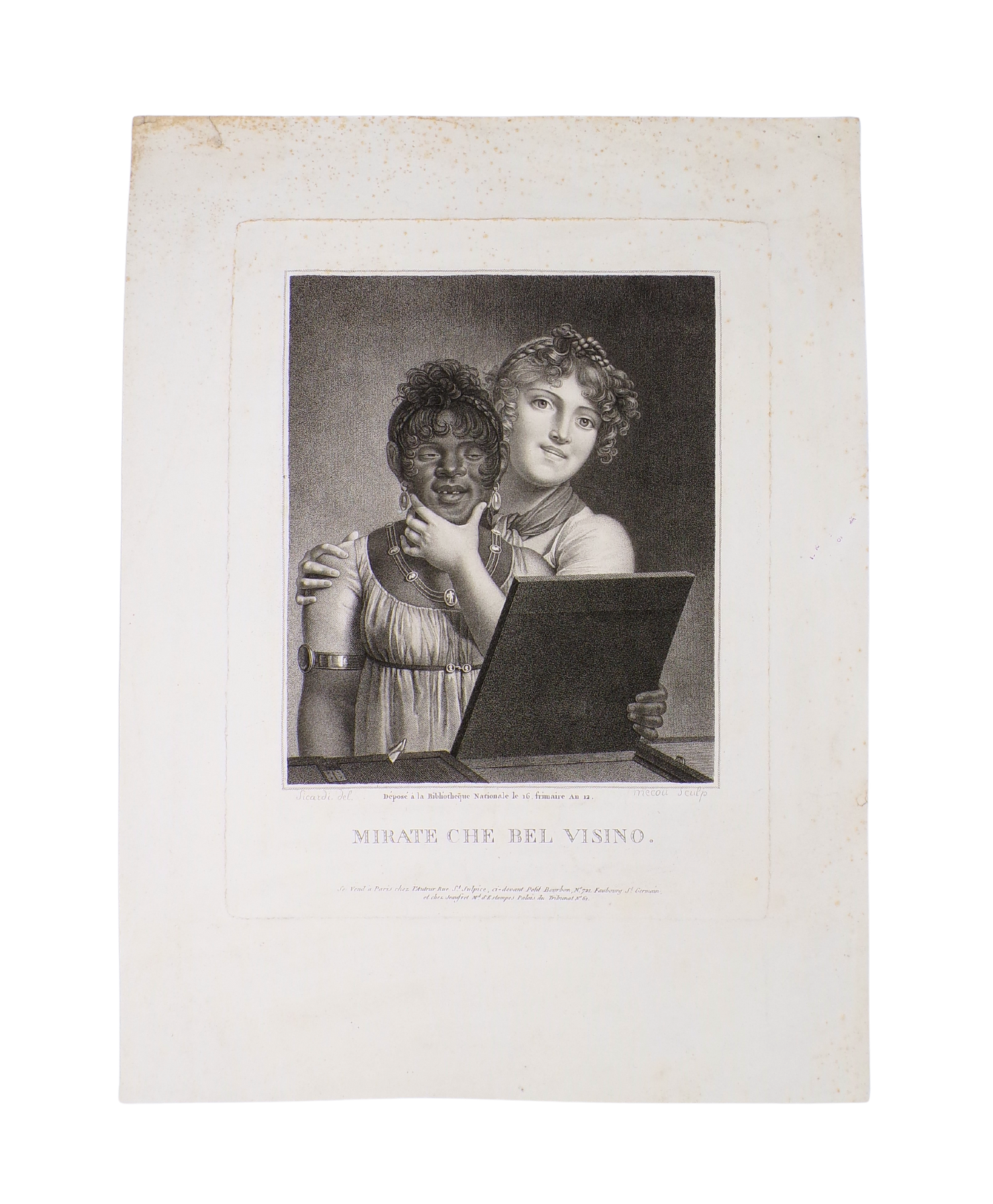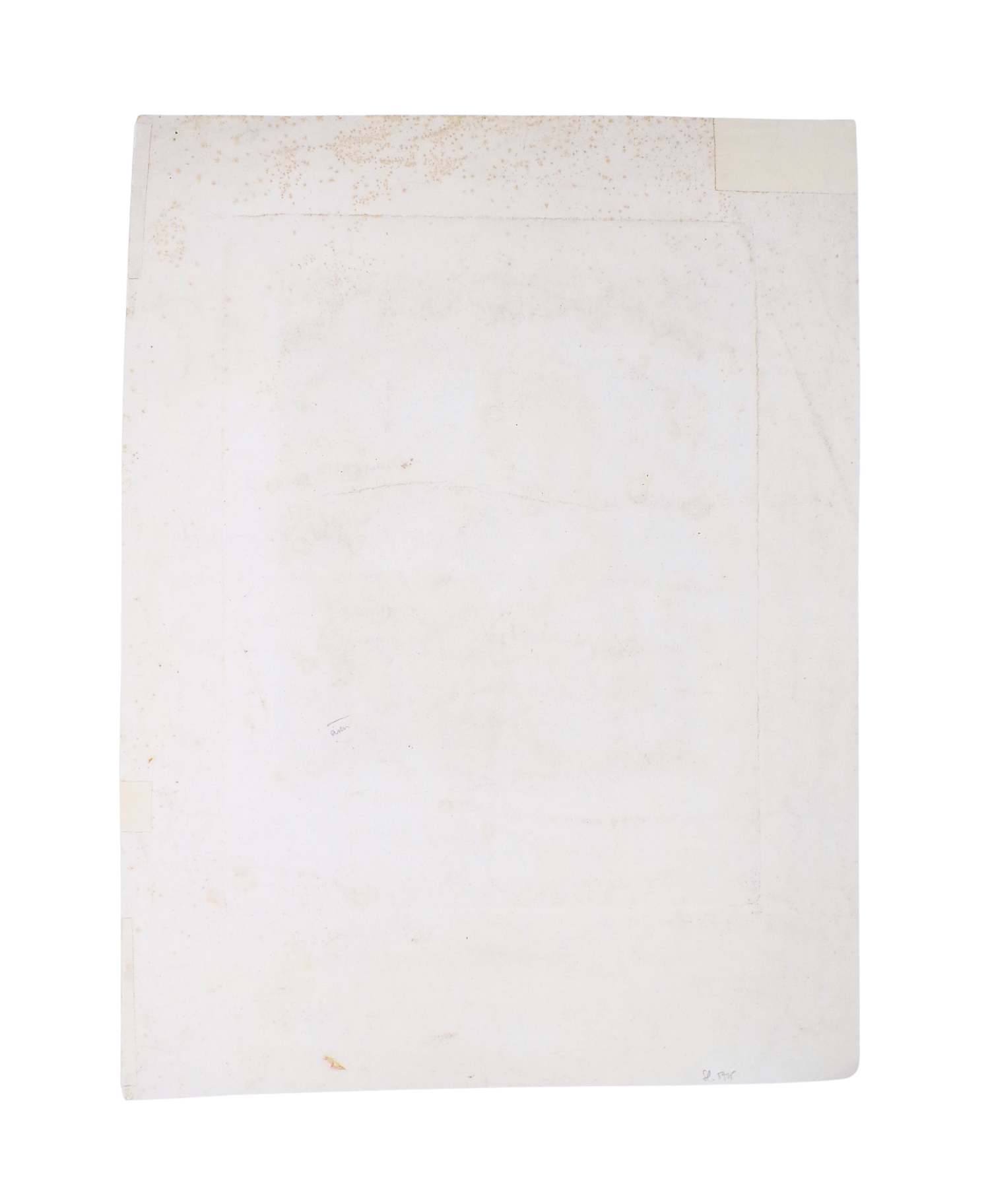A shocking and important visual record of racism
- Regular price
- €0,00 EUR
- Regular price
-
- Sale price
- €0,00 EUR
- Unit price
- per
Louis Marie Sicard (1746-1825) [design]; André Joseph Mécou (1771-1837) [engraver].
Mirate che bel visino. [Look, what a beautiful little face!].
Paris, chez l'auteur rue St. Sulpice, ci-devant Petit Bourbon, no 721, Faubourg St. Germain et chez Jeaufret md. d'estampes, Palais du Tribunat, no 61, [1803].
Stipple engraving on smooth wove paper, 31,5 x 24 (plate); 44,5 x 33,5 (sheet) cm. Captioned: Déposé à la Bibliothèque nationale le 16 frimaire an 12. [1803].
This rare and viscerally racist print, though disturbing and cruel, is important for understanding early modern European attitudes toward skin color. Today this scene is extremely difficult to look at, but in its time, viewers were expected to find humour in the "piquant opposition" depicted in this "composition full of grace and originality" (Le Journal de Paris, 28 December 1803, p. 2).
Sicard’s design appealed to popular tastes by drawing on comic theater, adopting its direct audience engagement and the mockery commonly directed at servants. The print transforms an existing tradition—the elite white woman and her Black servant—into a backstory for presenting Blackness as a comic grotesque. The result is a picture that blends themes of race, gender, and market-driven entertainment. By the late eighteenth century, this direct appeal to popular culture highlighted the strong connection between racism and mass entertainment (see Marika Takanishi Knowles, "Theatricalizing (and Marketing) Race in Sicardi’s 'Mirate che bel visino'"). Another version of this image, created by Harriet Cany Peale (1800-69) in 1845 and titled "Her Mistress's Clothes," has retroactively become the common name for the original.
Despite understandable hesitation to display it, the present print is crucial for understanding the visual semantics of racism.
Condition: full margins, some mostly marginal foxing, small repairs at the edges, otherwise in good condition.
Literature:
Deirdre Coleman, (2022) Creole Identity in the Enlightenment. Journal for Eighteenth-Century Studies, 45 (2022), pp. 169–187.
Elizabeth O'Leary, At Beck and Call: The Representation of Domestic Servants in Nineteenth-Century American Painting, Washington D.C., Smithsonian Institution Press, 1996, pp.140-43.
Marika Takanishi Knowles, “Theatricalizing (and Marketing) Race in Sicardi’s ‘Mirate che bel visino’,” Journal18 (June 2023), https://www.journal18.org/6997.
Couldn't load pickup availability
Share



Contact
Email: hugo@artemrarebooks.com
Phone: +31651042297
Visit us on appointment at:
Former US Embassy
Lange Voorhout 102
2514EJ
The Hague (The Netherlands)
Shipping address:
Nannie van Wehlstraat 51
2548MN
The Hague
The Netherlands



